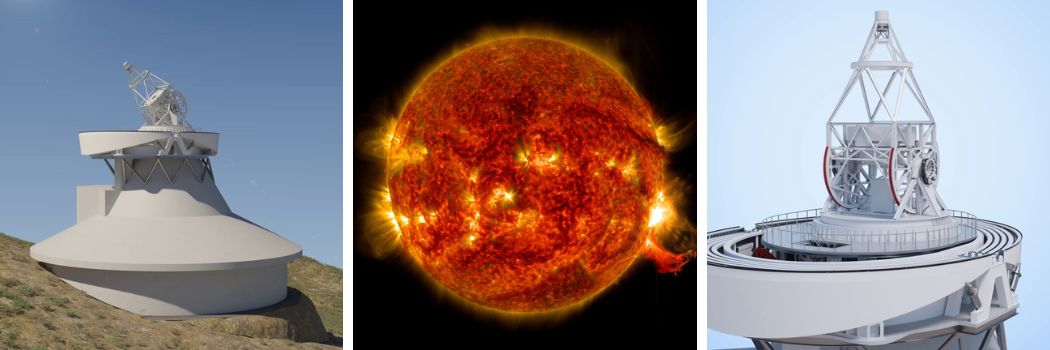
We're part of a project to build Europe's largest solar telescope.
Called the European Solar Telescope (EST), it will provide astronomers with an unrivalled tool for observing the Sun.
Durham's Centre for Advanced Instrumentation – part of our Department of Physics – will work on the multi-conjugate adaptive optics system that corrects for the blurring effects of the Earth's atmosphere, sharpening ten times sharper images. These high-resolution images will enable astronomers to understand the environment in and around our nearest star.
This will allow them to better predict when dangerous solar flares may strike the Earth.
The EST's high-resolution images will also support the work of research groups across the University – such as the Magnetohydrodynamics Group in our Department of Mathematical Sciences – to refine their models of solar activity.
Solar atmosphere
The EST will have a 4.2-meter primary mirror, state-of-the-art technology and specialised instrumentation suite.
It will be built at the Roque de los Muchachos Observatory, on the Spanish island of La Palma which is renowned worldwide for its astronomical observations.
The EST has been meticulously designed to study the magnetic and dynamic coupling of the solar atmosphere and capture interactions between the different atmospheric layers of the Sun.
A comprehensive set of instruments will be installed to enable simultaneous observations across multiple wavelengths, giving the EST a higher efficiency compared to existing or future ground or space-borne telescopes.
Space weather
The EST aims to provide valuable insights into the mechanisms underlying solar flares and coronal mass ejections.
These events determine the so-called 'space weather', which can lead to geomagnetic storms on Earth - seen as the Northern Lights - and have a strong influence on our technological society.
The preliminary design phase of the EST has recently been completed and it's planned that the EST will become operational in 2028-2029.






